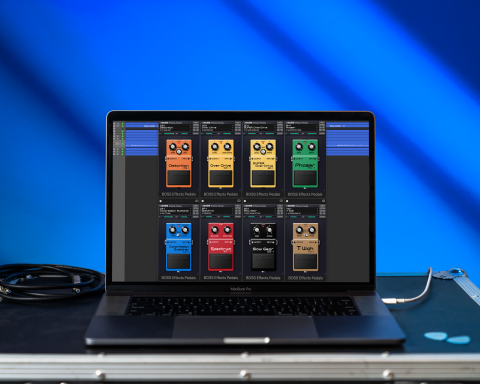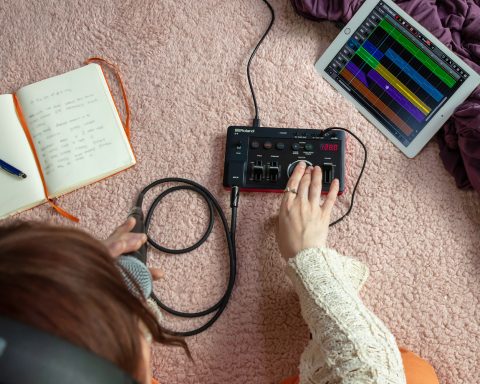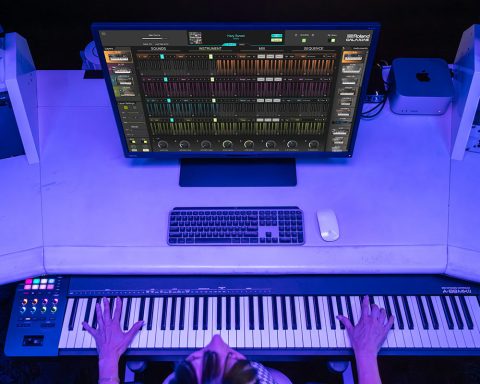Welcome to Production Hacks, a series to inspire producers to break free from old habits and embrace inspiration. Electronic music production is a vast world full of grooves, gadgets, and gear. Still, whether a beginning or an advanced producer, it’s easy to get stuck in familiar patterns. With so many tools at our disposal, sometimes the act of making music can become overwhelming. One of the goals of Production Hacks is to offer tips and tricks. In addition, the series will help you shift your process, expand your toolkit, and streamline your workflow. The result? Become the producer you’ve always wanted to be.
Why Melodies Are Important
Melodies are the cornerstone of any popular song. They’re what we sing in the shower, hum on the way to work, and are usually the most memorable parts of a song. Usually, when we think of a melody, we bring to mind what a vocalist would sing. However, many melodies go into the construction of a song.
As music producers, we can create melodies that inspire the artist to write an amazing song. We can also simply support the artist as they sing a different melodic line. Melodies are key because they help guide the listener through a song’s journey. Along with lyrics, melodies help tell a story and set a mood for a composition. When discussing melodies in production, let’s divide them into three categories.
Melody Types
Main or Lead Melody
This is the tune or what leads the song. It’s usually what a singer sings and moves the arrangement along. When producing a track, you can have instruments play the main melody. You might eventually replace this with an artist’s vocals. Another option is to write a strong melody that will act as a transition between sections.
Counter-Melody
These are separate melodies that support the main melody. Usually, a counter-melody provides contrast, which makes the main melody more interesting. Compare a counter melody to a supporting actor in a movie. Their role is to interact with and weave around the lead actor to elicit the strongest and most dynamic performance. When composing a beat, your main melody may become the counter-melody after adding vocals. However, you may be creating a beat to a pre-existing song or melodic idea. If so, try creating mini-melodies that support the main melody without overshadowing it.
"A counter-melody provides contrast which makes the main melody more interesting. Compare it to a supporting actor in a movie."
Harmony Lines
A harmony line is when you play the same melody in intervals, starting on a different note. Usually, we harmonize melodies in specific ratios. These include diatonic thirds, perfect fourths, octaves, and perfect fifths. Harmony lines are commonly used as vocal melodies. Also, using them in arrangements creates interesting textures and makes instruments stand out in a mix. Let’s explore a few simple ways we can construct creative melodies.
EXCERCISES
Melody Cells: 2-3 Notes (Mini-Melodies)
A simple way to begin exploring melody building is by giving yourself a few musical bricks to build with. In this case, let’s take two or three notes and try to build a melody. Use the notes in any octave you wish, but stick to these primary pitches. A good way to implement this technique is to program a drum beat or load a drum loop.
Practice making 4-bar loops of drums and melodies using two or three notes. Once you’ve made a few variations, try a different set of notes. The goal is to be as creative as possible with the least amount of potential for error. You’ll notice that you can dictate a track’s entire mood and direction with two elements: drums and melody.
After doing this exercise a few times, you’ll easily hear harmonies that fit with your melodies. You may even think up basslines that can support the groove and harmony. Listen to tracks like Dua Lipa’s “Don’t Stop Now,” SAINt JHN’s “Roses remix,” and Mark Ronson’s “Uptown Funk.” Notice how they make use of three strong elements: bass, drums, and vocal melody.
Creating Ear Candy with Diatonic Melodies
Once you get the hang of crafting mini-melodies, the next step is trying to create catchy melodies you can sing. Using the same process of recording to drum loops, try singing your own melodies. Then transcribe and program whatever you sing. Use however many notes you want. Overall, the key is to compose a simple and catchy melody—something that doesn’t require an advanced vocal technique to execute.
Keep it Simple and Singable
Why is singability important? Most music consumers are not professional musicians. Therefore, they don’t respond to complex musical ideas as readily as simple themes. These should have enough repetition and variation to stick to the subconscious. This idea is usually referred to as “ear candy.” People often use the term to describe upbeat pop music that is pleasant and entertaining but lacking in depth. Another theory is that you can create music with depth using “ear candy” as a technique to draw listeners in.
"In Western harmony, there are only twelve notes. Yet, within those twelve notes are infinite melodic possibilities."
Infinity in 12 Notes
In Western harmony, there are only twelve notes to choose from when constructing melodies. Yet, within those twelve notes are infinite melodic possibilities. A good way to dial back some chaos is by creating diatonic melodies. This means singing/composing melodies that only fall within a certain key. If you’re confused by the concept of keys, here’s a free theory resource for music producers.
Diatonic melodies use only the notes which appear within the key or the correlating major or minor scale for whatever pitch is tonal center. If a beat is in C major, the melody should contain all the white notes on the keyboard. These same notes would also make a melody for a song in A minor. One excellent exercise to practice this concept is creating a loop with drums and a one-note bassline (the root of the key). Once you have your loop, sing or play melodies containing the notes of the major or minor key you want to base your song around. This correlates to the major and natural minor scales.
Pentatonics and Arpeggios
Another great melodic tool is the pentatonic scale. The pentatonic scale consists of five notes. These are the first three notes of any major scale plus the fifth and sixth notes in the major pentatonic. For a minor pentatonic scale, use the first, third, fourth, fifth, and seventh notes of the minor scale.
In the same way we use diatonic melodies to root us in the key of our song, we can also use pentatonic scales. They create melodic themes inside the key which also have internal symmetry. There are many patterns to experiment with using pentatonic scales in different combinations. Try creating melodies using one pentatonic scale.
Arpeggiated Melodies
Another great melodic trick is using the harmony of a song to dictate melodies. If you can construct chord progressions, try arpeggiating the chords in various rhythms to create melodies. For example, the chord progression on this beat is Cm-Fm-G7alt.
The notes from each of these chords create a melody that outlines the harmony. Simultaneously, it provides a complementary texture to the rest of the track. Arpeggiated melodies work particularly well as counter melodies. Try making beats with simple chord progressions. Then create melodies using only the notes of those chords.
Final Notes
These are but a few of the infinite ways to build melodies. A great melody makes use of repetition and variation. Once you have a strong melodic idea, repeat it a few times before making a different variation. Theme and variation are techniques that span centuries and exist in the music we use today. Try practicing by using some of the sounds and exercises from this article. Download the ZENOLOGY presets and Zenbeats project files below.
DOWNLOAD
Production Hacks: Melody Day Patches for ZENOLOGY + Project Files for Zenbeats
Try out the patches from this article in ZENOLOGY Pro, ZEN-Core-compatible Roland hardware, and the ZC1 Synthesizer* in the Zenbeats music creation app.
 DOWNLOAD: Melody Day Patches for ZENOLOGY
DOWNLOAD: Melody Day Patches for ZENOLOGY
*ZC1 does not support patches using sample packs
Use the sessions in this article to practice on your own. Just drag and drop the project file into the Zenbeats Timeline view.






